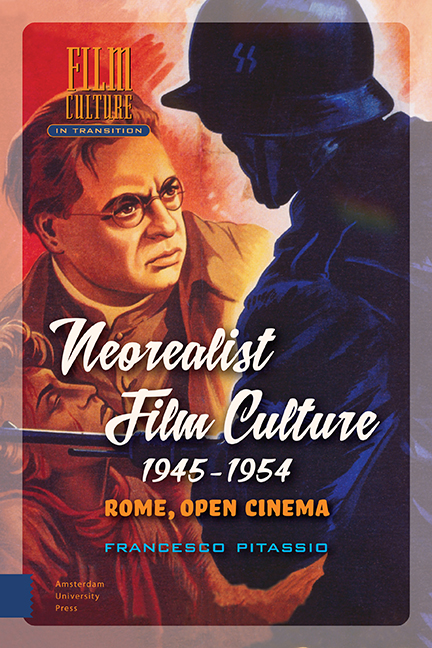Book contents
- Frontmatter
- Contents
- Acknowledgements
- Introduction: An Uncertain Direction. Neorealist Cinema and Transitional Culture
- 1 Locating the Real: National, International, and Transnational Neorealism
- 2 Lies of Memory: Post-war Culture, Remembrance, and Documentary Filmmaking
- 3 Looking at the Images: Neorealist Visual Culture
- 4 Actors, Non-professional Actors, Starlets, and Stars: Film Performance in the Neorealist era
- Bibliography
- About the Author
- Name Index
- Film Index
3 - Looking at the Images: Neorealist Visual Culture
Published online by Cambridge University Press: 21 November 2020
- Frontmatter
- Contents
- Acknowledgements
- Introduction: An Uncertain Direction. Neorealist Cinema and Transitional Culture
- 1 Locating the Real: National, International, and Transnational Neorealism
- 2 Lies of Memory: Post-war Culture, Remembrance, and Documentary Filmmaking
- 3 Looking at the Images: Neorealist Visual Culture
- 4 Actors, Non-professional Actors, Starlets, and Stars: Film Performance in the Neorealist era
- Bibliography
- About the Author
- Name Index
- Film Index
Summary
Abstract
Neorealism offered a harsh representation of reality in its portrayal of war brutality, shantytowns, an impoverished population, and abandoned children. This depiction relied on photographic reproduction. However, besides this rendition, neorealism consisted of other multifaceted forms that defined its visual culture. Film posters promoted neorealist productions through a pictorial style and the eroticisation of the actors’ bodies, instead of displaying photographic images of everyday reality, as in photojournalism. Neorealism emerged at the same time as photo-romances, which were popular magazines offering melodramatic narratives in pictures. Neorealist works were novelised according to this template, which contributed to defining neorealist visual culture. In the 1950s, as neorealism declined, attempts were made to merge documentary representation with the template provided by photo-romances and the burgeoning field of photo-journalism. Photo-documentaries published in Cinema Nuovo expanded and prolonged neorealist visual culture into photography.
Keywords: Visual culture; scopic regime; film posters; photo-romances; photo-documentaries
Neorealism as a Scopic Regime
A bill sticker (Lamberto Maggiorani) carefully spreads a huge film poster on the walls in the centre of Rome. A beguiling and seductive female beauty peeps out from within the wrinkles of the poster. It is Rita Hayworth, promoting the film Gilda (Charles Vidor, 1946). The bill sticker timidly smiles, possibly from professional satisfaction of a job well done, or perhaps in reaction to the image radiating its joy from the paper. It is a matter of seconds: a well-organised party of rascals sneaks out of the parked cars: one makes sure the bill sticker is looking in the wrong direction, another one is ready to mislead him, the third one grabs the bike left unlocked beneath the ladder, jumps on it and quickly rides away from his victim. This latter desperately tries to chase the thief, but to no avail. The rest of the narrative is devoted to the many attempts made by the robbed man and his son to retrieve his means of transportation and work as they meander the streets of sunny, ancient, intricate, and merciless Rome.
This sequence is certainly one of the most renowned and iconic in neorealist production and the turning point in the plot of Bicycle Thieves.
- Type
- Chapter
- Information
- Neorealist Film Culture, 1945–1954Rome, Open Cinema, pp. 209 - 262Publisher: Amsterdam University PressPrint publication year: 2019



